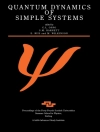This book deals with the conditions and the consequences of the production of different syntactic sentence structures. During the sixties the syntactic structure of sentences was one of the most intensively studied topics in psycholinguistic research. The dominant interest did not, however, lie in the function of syntactic structures but in the ability to understand and to utter them. Later, in the seventies the interest shifted to the semantic structure of sentences. Many studies centred around the structural aspects of the repre- sentation of knowledge. The leading question was: how can the meaning of an utterance be described? The widely accepted answer was: the central unit of meaning is the proposition. From this point of view, the aim of an utter- ance is to transmit propositional meaning, and syntactic structure is of inter- est only insofar as it influences the comprehension of propositional meaning. In this book both aspects, i. e. the syntactic and the semantic structure of sentences have been considered. The dynamic aspects of knowledge use and its relationship to the syntactic structure of sentences are thoroughly analysed and studied empirically. The main question is how semantic knowledge is communicated through syntactic structure. Syntactic structure has causes and consequences. In general we assume that the syntactic structure reflects dynamic aspects of the knowledge base of the speaker and determines dynamic states in the listener.
Johannes Engelkamp & H. D. Zimmer
Dynamic Aspects of Language Processing [PDF ebook]
Focus and Presupposition
Dynamic Aspects of Language Processing [PDF ebook]
Focus and Presupposition
Beli ebook ini dan dapatkan 1 lagi GRATIS!
Bahasa Inggris ● Format PDF ● ISBN 9783642691164 ● Penerbit Springer Berlin Heidelberg ● Diterbitkan 2013 ● Diunduh 3 kali ● Mata uang EUR ● ID 6381027 ● Perlindungan salinan Adobe DRM
Membutuhkan pembaca ebook yang mampu DRM












